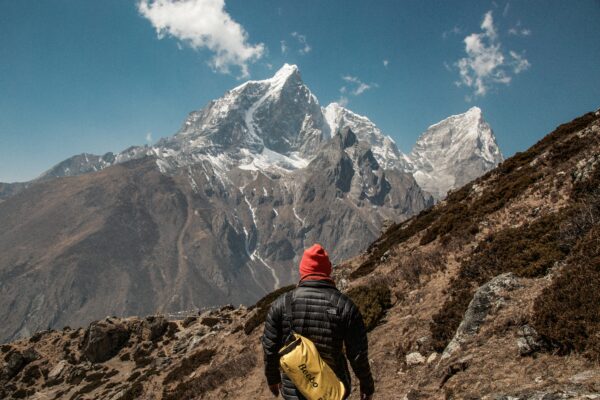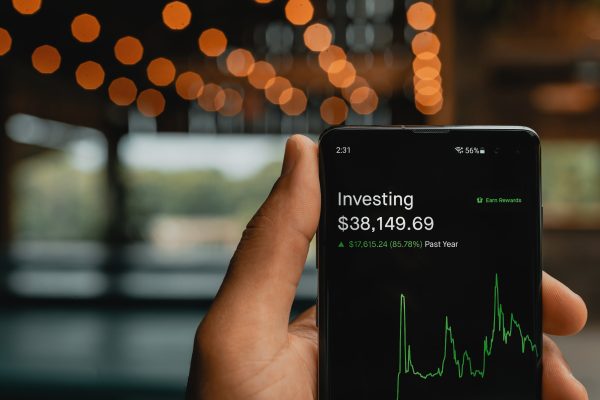
What IFG will do to help bring about a truly Islamic economy
05 January 2024 8 min read

11 min read
Published:
Updated:
IW
IFG Staff Writers
There has been a lot of talk recently of supposed supercycles for commodities. Most commodities have recovered their losses from the market crash of March 2020 and in many cases their prices are above pre-pandemic level.
Plenty of analysts and investors believe that this upwards run will continue and are even suggesting a golden period for commodities. In this article we will breakdown commodity cycles, what the future outlook is expected to be and how you can get exposure to them.
Commodities are widely used basic goods and materials that are collected and processed for human activity. They are the backbone of our economy and used for the production of essential goods such as food, energy and clothing. As such their prices can have huge consequences. Many investors also see commodities as a good source of diversification and a hedge against inflation.
There are many different types of commodities which can be divided into three major groups:
All of these commodities are traded daily on commodities markets, much like stocks are.
Historically, the commodity prices have followed a pattern of boom and bust cycles. These cycles can last many years. The cycles are driven by changes in the balance between the supply and demand for commodities.
This balance can be influenced by a number of factors:
Eventually prices will normalise as the supply and demand equation balances out.
A supercycle is when the prices of commodities rise above their long-term trend driven by structural changes worldwide over a long period. This can last anywhere between 10 to 35 years. Which is then followed by a downturn of a similar length. Therefore a complete cycle could be as short as 20 years or as long as 70 years!
Since the 19th century there have only been 4 identified supercycles, each of which was tied to a transformational period of economic development. The first recorded cycle was when the US underwent mass industrialisation in the late 19th century. The next cycle followed the global rearmament phase (i.e. replenishing weapons supply) before the second world war. The third cycle was associated with the reindustrialisation of Europe and Japan in the 1950s.
The most recent one was triggered by the industrial revolution of emerging economies led by China early this millennium. Other countries included the likes of Brazil, Russia, and India. These countries led by China were undergoing a period of rapid industrialisation and economic development which saw unprecedented levels of demand for many commodities. This supercycle was halted by the financial crisis in 2008 making this one of the shorter supercycles.
There has been a lot of debate by analysts and investors as to whether we are seeing a commodity supercycle. As we’ve seen from the previous section, a supercycle usually follows a big structural change. This is what we want to see evidence of. Let’s take a look at the arguments for and against.
Analysts such as Goldman Sachs believe that the world will embark on a green industrial revolution to kickstart growth as we come out of the pandemic. This industrial revolution will have both a direct and an indirect effect on commodities. Demand for metals such as copper will directly benefit from any green industrialisation. Agricultural commodities such as soyabeans will also benefit as they are used in biofuels which are increasingly being blended with petrol to reduce fossil fuel usage.
The jobs created and the resultant economic growth of this transition will also indirectly cause prices to go up. The more prosperous economies are the more money is spent on commodity-intensive activities (such as purchasing goods or constructing buildings).
It’s not just Goldman Sachs that share this view. Many other investors and analysts are bullish on clean energy. We covered this in more detail recently in an article on why the smart money is investing in clean energy. In a nutshell, the world is finally taking climate change seriously and as a result many major countries and corporations are committing to direct action to boost renewable energy sources.
This could indeed be a structural shift similar to the industrial revolution of the likes of China at the start of this millennium.
Governments across the world won’t just be spending on clean energy. Many policymakers are also generally targeting full employment and increased income for the less well-off in their societies. This is a change from previous crises where the financial stimulus response focused primarily on the rich. Instead of financial stability, the focus this time round appears to be job creation.
These redistribution policies if effective, will put money into pockets of poorer households who are more likely to immediately spend it. As wages also increase, this will lead to increased consumption as people buy more goods and construction activity increases. These are commodities-intensive activities and therefore would result in increased demand and upward pressure on prices.
Analysts are also suggesting that there won’t be enough supply to meet any major shifts in demand.
This in part due to a lack of investment in the commodities space which actually worsened during the pandemic, as producers prioritised existing operations. For agriculture, heatwaves and a lack of rain is causing supply issues which is already hampering the harvest of major producers such as America. As weather conditions across the world continues to be impacted by climate change, the agricultural industry rapidly needs to invest in the latest technology to reinforce harvests and the supply chain. If supply cannot keep up with demand, then prices will naturally increase.
Something similar happened with the most recent supercycle. Miners and big oil producers were unprepared for the scale of demand that began to come from China which set prices soaring. Recently retired Glencore CEO, Ivan Glasenberg has also predicted a supercycle and has admitted that Glencore don’t have many ‘shovel-ready’ projects. This is important as Glencore are one of the biggest miners and commodity traders in the world.
If there is to be another supercycle, it looks like miners and producers are ill-prepared once again.
Inflation, which is the decrease in purchasing power of your money over time is on the rise and looks set to be here for the future. We covered this in more detail here. Many investors view commodities as a hedge against inflation. This is especially true for the likes of gold. Furthermore many commodity producers will raise their prices in line with inflation to balance out the increase in the cost of production caused by inflation.
Investors may also begin to shift money from assets such as stocks to commodities. This is because many stocks have seen huge increases in prices over the past year and some investors see commodities as better value for money.
The prices of commodities tend to increase when the value of the dollar falls. This is because commodities are mainly priced in dollars which is the world’s reserve currency. So when the value of the dollar drops, it makes these commodities cheaper in other currencies. This gives non-US buyers greater purchasing power who take advantage by buying commodities. This is why a weaker dollar is seen as good news for commodity prices.
The US’s response to the pandemic has weakened the dollar, particularly their decision to keep interest rates low. This is because low interest rates are less attractive to investors who want to maximise their return, so investors will flock to other currencies.
The bear case recognises that there are factors that will boost demand but believe that these are either already priced in or are temporary events which will fade. In short, they expect a boom cycle but not a supercycle. Let’s take a look at some of their arguments.
There has been a lot of speculative investment in the past year as investors scramble to get ahead of the coming clean energy revolution. Most commodities are already trading above their pre-pandemic prices. Rapidly advancing technology is also making processes more efficient and boosting supply.
CRU, a commodity research consultancy believe that the increased demand for commodity-intensive goods such as electronics will rotate away into services (e.g. movies and restaurants) as we come out of lockdowns. This is why they believe that prices generally have already peaked. However they are still forecasting prices will remain elevated but this won’t exceed the recent peaks. This elevation won’t sustain long enough for the cycle to mature in a supercycle in their view.
Whilst governments across the world will be spending bid on expanding their economies as we recover from the pandemic, many believe this won’t be large enough to cause a supercycle. China’s growth post covid also appears to be slowing and the rest of the world hasn’t really gotten going yet.
Analysts are sceptical as to whether the growth will amount to the transformational change witnessed in the previous two supercycles, when China began its industrialisation phase or when European countries expanded after WW2.
The big structural shift that the supercycle theory supporters are relying on is the shift to cleaner energy. However this won’t be good for all commodities. Commodities such as oil in fact will see demand fall as countries move away to more renewable sources.
Governments and central banks are trying to contain inflation. The Federal Reserve in the US has brought forward rate increases for interest rate, boosting the strength of the dollar. Further action taken that successfully manages to slow inflation could dampen the prospects of a supercycle. However many observers do believe that governments will not be able to rein in inflation and we are inclined to agree.
Most analysts are confident in a boom cycle, some are just sceptical as to whether it will go as far as to become a supercycle. A supercycle would require a transformative structural shift.
The clean energy revolution could be that big change. For this reason, the future does look very promising for those commodities that directly stand to benefit from this shift. This look to be the likes of copper, lithium, and rare earth metals. Copper in particular is set to be the star of the show, with it even garnering a label as “the new oil”. This is because there is no other metal better suited to the capture, storage, and transportation of electricity.
The other commodities do still look to be set to enjoy positive futures but this will most likely be temporary or not large enough to reach supercycle territory. For these commodities you really want to take an in depth look into each of them individually. Different types of commodities will be affected by different factors to varying degrees. For example, the likes of oil will do well initially when economies start to recover as we come out of covid. Agricultural commodities such as corn, soyabeans and wheat look set for a bright future as demand has accelerated, outpacing the growth in supply.
Lastly, this is very much a long-term play. There is a lot of hype at the moment so be sure to enter with a long term horizon. In the next section, we will discuss various ways in which you could get exposure to commodities.
You can gain exposure directly or indirectly through the stock market.
The direct option is where you buy commodity ETFs (exchange-traded funds) or ETCs (exchange-traded commodities). Commodity ETFs are funds listed on the stock market that specifically invest in commodities. For more details on ETFs, check out our comprehensive guide here. ETCs only invest in commodities.
From a sharia compliance side, you want to look for the ETFs that actually hold the underlying commodity and avoid ETFs that trade in futures or options. See our Fatwa Forum for more on why most scholars believe futures and options trading is not permissible. A quick and easy way is to look for commodity ETFs or ETCs that have physical in the name. This usually indicates that they are physically backed.
The indirect option is where you invest in companies involved in the mining or harvesting of commodities. Many oil, gas and metal miners are publicly listed and available to invest in. There are also plenty of agricultural stocks that can give you exposure to that sector. This could be a great way to obtain exposure as mining and agricultural stocks will generally rise in price when the price of underlying commodities rises. However do understand that you are buying a company which will come with all the associated operational challenges and it is not so straightforward as simply investing in the underlying commodity.
This option requires you to be actively engaged with assessing the health of the company, it’s investment case and also whether or not the company’s financials are sharia compliant. For more detail on the screening criteria for companies, here is our stock screening article. We also have a halal stock screener course that goes into more detail and breaks down each step of the process.
You could even look to invest in ETFs that invest in a basket of miners, although you would have to manually screen each company in that ETF for sharia compliance.
You can gain exposure to commodities (in particular gold) by investing with Islamic funds or Islamic robo-advisors. They will typically allocate a portion of your portfolio to commodities, which is usually just gold. If it’s an actively managed fund and you want exposure into other types of commodities, it is worth raising it with the provider to see if they can facilitate that for you. This is a hands-off option that gives you a well-diversified portfolio with exposure into other asset classes.
This is the most hands-on option where you physically purchase the underlying commodity. For many this will also be the least practical option. Options include buying silver or gold bullions and coins. We covered this in a lot more detail in our how to invest in gold article.
So there we have it. It looks like the future is bright for many commodities. For those commodities directly impacted by a clean energy revolution, this could grow to become a supercycle. Obtaining exposure to these commodities would give you healthy diversification and could boost your investing returns over the coming decade. If you are interested in investing in some of the investment options we covered in this article, do check out our halal investment comparison engine.

05 January 2024 8 min read

21 July 2023 6 min read